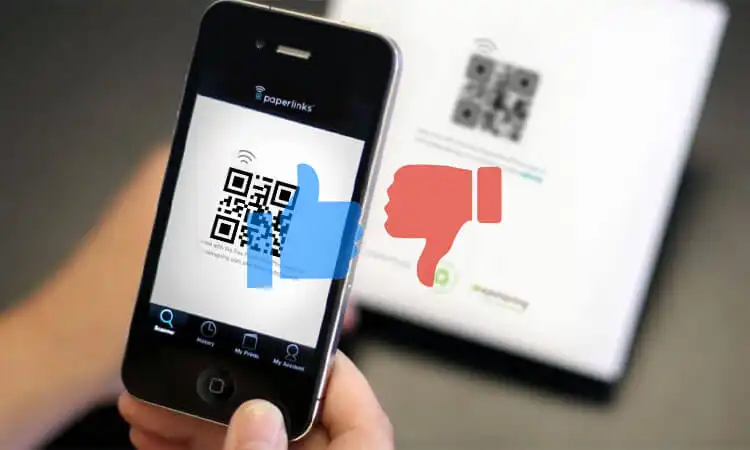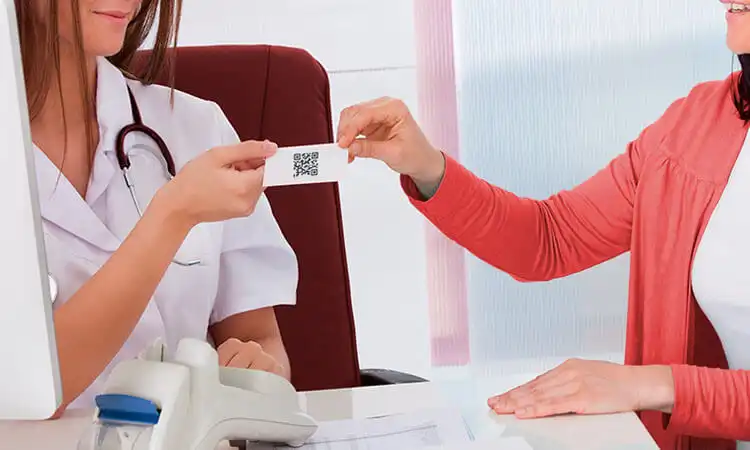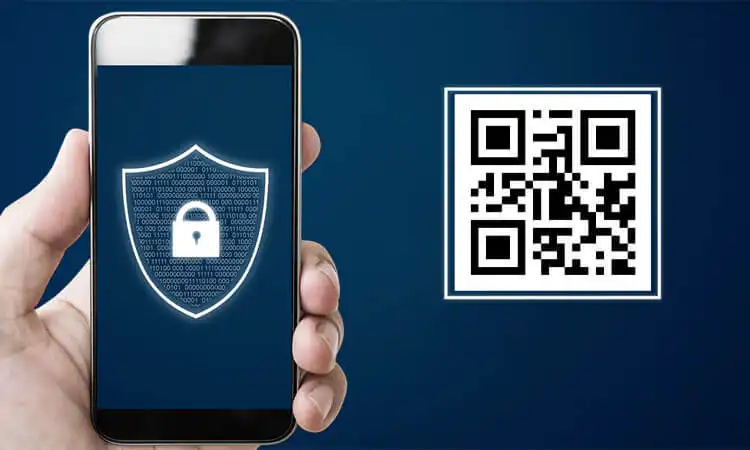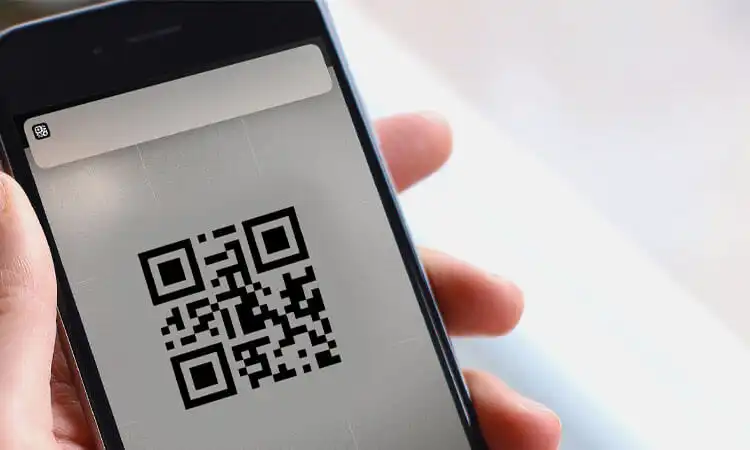QR codes have become a popular tool for businesses to share information and promotions with their customers. However, as with any technology, there are potential risks associated with their use. One of the biggest risks is the possibility of QR code scams, where malicious individuals create fake codes that lead to harmful websites or downloads. That’s why verifying the legitimacy of QR codes before scanning them is essential. In this article, we will briefly overview QR code verification, its benefits, and how it works.
What is QR Code Verification?
QR code verification is an essential process that ensures the authenticity of users. This process involves using a Quick Response (QR) code that can be scanned using a smartphone or other mobile devices. The QR code contains information that can be interpreted by the device, such as a URL, text, or other data.
There are several ways to verify QR codes, including using a QR code verification app, QR code verification online, or a QR code verification system. These methods ensure that the code has not been tampered with and that it contains the correct information. A secure algorithm is used to generate a unique signature for the code, which is then compared to the one stored in a trusted database to confirm its genuineness.
One of the most common uses of QR code verification is in the verification of QR code certificates. This process involves verifying the status of the code to ensure that it is valid and up-to-date. This can be done using a QR code verification scanner or through a QR code verification discord system.
How Does QR Code Verification Work?
QR code verification works by using a secure algorithm to generate a unique signature for each code. The signature is created using a combination of the code’s data and a secret key. The key is only known to the parties involved in the transaction, ensuring that anyone else cannot replicate the signature.
When a QR code is scanned, the signature is extracted and compared to the one stored in the trusted database. The code is considered genuine if the signatures match, and the transaction can proceed. If the signatures do not match, the code is rejected.
Understanding the Pros and Cons of QR Code Verification
QR code verification has become increasingly popular in recent years thanks to its versatility and ease of use. However, as with any technology, it has its advantages and disadvantages.

Pros of QR Code Verification
Improved Security
Two-dimensional code verification is a secure way to authenticate users. It ensures that only authorized users can access an account or perform a transaction. This is because the QR code is unique and can only be used once. It also eliminates the need for users to remember complex passwords, which can be easily compromised.
Convenient and Fast
Two-dimensional code verification is a fast and convenient way to authenticate users and transactions. All users need to do is scan the QR code using their smartphone, and they will be instantly authenticated. This eliminates the need for users to remember passwords or carry authentication tokens, making the process much more user-friendly.
Cost-Effective
Two-dimensional code verification is a cost-effective way to authenticate users. It eliminates the need for expensive hardware tokens or authentication software. It also reduces the risk of fraud, which can be costly for businesses.
Versatile
QR code verification can be used in a variety of applications. For example, it can be used to verify the authenticity of products, such as luxury goods, pharmaceuticals, and electronics. It can also be used to authenticate users for online banking, e-commerce, and other online services.
Cons of QR Code Verification
While QR code verification has several advantages, it also has its disadvantages. One of the main drawbacks is that it is limited to tech-savvy users and environments. Not all users have mobile phones or understand the technology well enough to use it quickly and effectively. Additionally, QR codes are not effective in areas without reliable Wi-Fi connectivity.
Another disadvantage of QR code authentication is the potential for customer privacy concerns. The sharing of massive amounts of data creates concerns for customer privacy. Organizations must ensure that they comply with data collection, consent, and privacy regulations when implementing QR technology.
Examples of QR Code Verification
QR code verification is being used in various industries and applications. Here are some examples:

Banking
Banks are using QR code verification for two-factor authentication. Customers must scan a QR code to confirm their identity when logging into their accounts or making transactions.
Healthcare
Healthcare providers are using QR code verification to ensure patient privacy and security. Patients can scan a code to access their medical records or to confirm their identity during appointments.
Events
Event organizers are using QR code verification to manage access to events. Attendees must scan a code to enter the venue, reducing the risk of counterfeit tickets.
Why is QR Code Verification Important?
QR code verification is important because it helps to prevent fraud and protect sensitive information. Without verification, it is easy for malicious actors to create fake QR codes that can be used to steal money or personal data. Verification ensures that only genuine codes are accepted, reducing the risk of fraud and increasing the security of digital transactions.

Additionally, businesses can benefit from Quick Response code verification by ensuring their customers receive accurate information and promotions. If a customer scans a fake QR code and receives false information or a harmful download, it can damage the business’s reputation and lead to lost sales.
How to Implement QR Code Verification
Implementing QR code verification is relatively easy. Here are the steps:
- Generate a unique QR code for each user account.
- Link the QR code to the user’s account.
- When the user logs in, they will be prompted to scan the QR code using their mobile device.
- Once the QR code is scanned, the user will be directed to a verification page where they can confirm their identity.
How to Verify a QR Code
There are a few simple steps you can take to verify the authenticity of a QR code:
- Check the Source: Ensure the QR code comes from a trusted source. If you receive a code from an unknown or suspicious source, it’s best not to scan it.
- Use a QR Code Scanner: Use a reputable QR code scanner app to scan the code. These apps can help identify if the code is legitimate or not.
- Look for Errors: Check the code for any errors or inconsistencies. If the code looks poorly designed or contains typos, it may be a fake.
- Check the URL: If the QR code leads to a website, check the URL before clicking on it. Don’t click on it if it looks suspicious or doesn’t match the company’s website.
Biometric Authentication and QR Code Verification
QR code authentication has been a popular method for authentication, but it has some limitations when it comes to security. A more secure alternative is biometric authentication, which uses each individual’s unique physiological or behavioral traits.
Biometric authentication offers maximum security by using unique traits such as fingerprint readings, facial and voice recognition, eyeball scans, heart-rate scans, or typing patterns. These traits are unique to each individual, making it difficult for fraudsters to replicate them.
In addition to offering greater security, biometric authentication offers a more seamless authentication experience. Users no longer need to remember complex passwords or carry a physical authentication device. They can simply use their unique biometric traits to authenticate themselves.
By combining QR code authentication with biometric authentication, organizations can enhance the security of their authentication process while also providing a user-friendly experience for their users. This is especially important for industries such as finance, healthcare, and government, where security is paramount.
QR codes are a convenient and popular way for businesses to connect with customers, but they pose a security risk if not properly verified. QR code verification protects personal information, prevents fraud, and maintains trust between businesses and customers. By taking the necessary steps to verify QR codes, we can all enjoy the benefits of this technology without putting ourselves at risk.
Frequently Asked Questions (FAQs)
-
Q: Can I verify the authenticity of my QR code?
A: Yes, you can verify the authenticity of your QR code. QR code verification is a process that confirms the legitimacy and validity of a QR code. One way to verify the authenticity of a QR code is by scanning it using a mobile device and checking its status using a trusted database. The unique signature generated by the code is then compared to the one stored in the database to confirm its genuineness. There are also online tools available that allow you to verify the authenticity of a QR code by uploading it to their platform.
-
Q: How do I make sure my QR code is secure?
A: To make sure your QR code is secure, you should follow some best practices, such as using a secure QR code generator from a reputable source, limiting the amount of data contained in the code, using a URL shortener to obscure the full URL, adding a security layer such as password protection or encryption, and using a QR code scanner that has built-in security features such as anti-malware and anti-phishing protection. Following these best practices ensures that your QR code is secure and protected from potential security threats.
-
Q: Why are QR codes invalid?
A: QR codes can become invalid for several reasons, including being tampered with or altered, containing incorrect or outdated information, being damaged or distorted, having reached their expiration date, or no longer being valid. If a QR code is invalid, it cannot perform its intended function. Therefore, ensuring that your QR code is valid and up-to-date is important.
-
Q: Can I scan a QR code without an application?
A: No, you cannot scan a QR code without an application. You need a QR code scanner application installed on your mobile device to scan a QR code. Several free QR code scanner applications are available for download on Android and iOS devices. Once you have installed a QR code scanner application, you can scan a QR code by pointing your device’s camera at the code and allowing the scanner application to read and interpret the information in the code.








